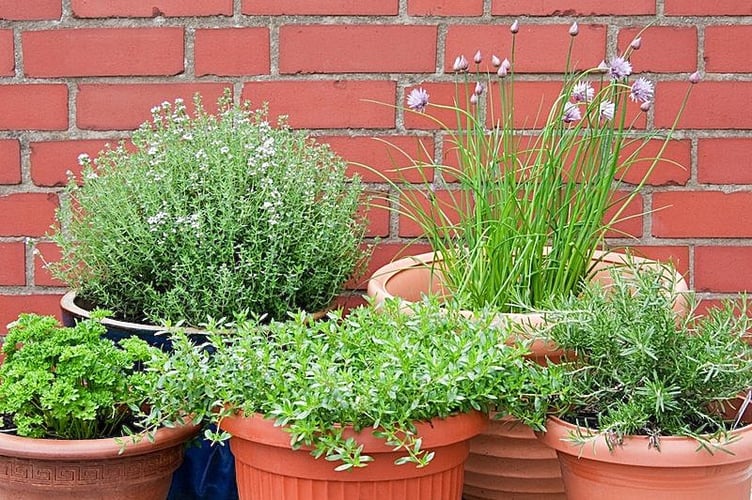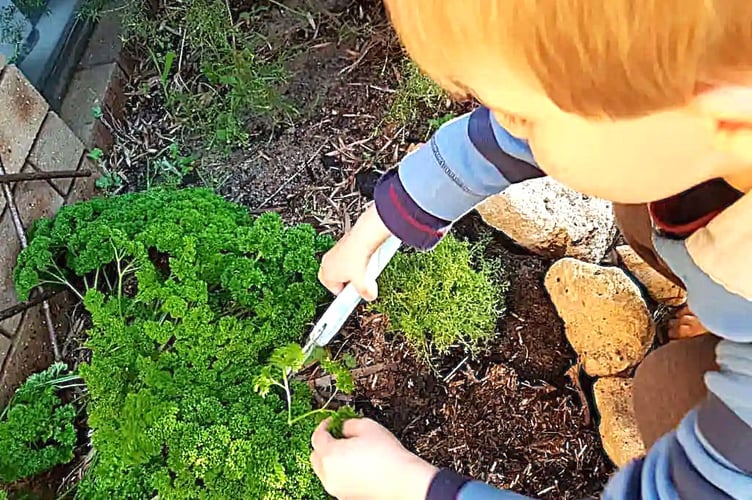SURVEYS show that more children are taking an interest in gardening and now is the ideal time to plan a 2025 gardening programme which gets your kids involved.
And you can’t do better than encourage them to try growing herbs.
Herbs are easy to grow in beds, borders, containers or on windowsills with a surprisingly small amount of attention.
Sunshine, well-drained soil and water when necessary, is all most of these hardy plants need to provide an all-year-round harvest, and container-grown plants can go in as soon as the weather is favourable.
Children are often delighted to learn that they can grow many of the herbs which are used in making their meals. Most kids love a pizza, so why not encourage them to plant a pizza herb garden which will include basil, parsley and oregano?
A few herb plants in the corner of the garden or a couple of containers are enough to get a youngster started. By keeping things small and uncomplicated it’s more likely to remain a fun project.
A basic herb garden for either children or adults, only needs about six or seven varieties to transform the way the family cooks and eats. You could start with mint, rosemary, fennel, thyme, chives, sage and parsley, before being a bit more adventurous with the likes of oregano, coriander, sorrel and sweet cicely.
Herbs come in two categories: annual or biennial and perennial. Hardy annual and biennial herbs like parsley, coriander, dill and chervil are fast-growing and can be sown outside from March at intervals until August.
Perennial herbs like oregano, mint, thyme, sage, rosemary, chives and fennel can be grown from seed, but buying them container-grown is less bother!

But if you want to grow your own, sow somewhere warm and under cover in the spring, potting them on when they are big enough to handle before planting out in their final positions.
Many herbs are Mediterranean plants and prefer a sunny sheltered location with well-drained soil. Planting in our West Somerset clay, it is sensible to incorporate coarse grit and well-rotted manure or compost to improve drainage.
But not all herbs need constant sun, and if your garden is shady, plants like mint, sorrel, parsley and coriander should be happy enough so long as they are not allowed to dry out.
Herbs will usually tolerate a slightly acid soil but the best pH level is neutral to alkaline. Some of our soil tends to be acid and will need lime before planting. But the good news is that herbs like rosemary, sage, thyme and lavender grow particularly well in our coastal area.
Herbs are much easier to grow in containers than many houseplants so long as they have enough space - pots should be anything from 8in-18in in diameter - planted in loam-based compost and fed throughout the growing season. Make sure containers have adequate drainage holes.
Trimming herbs in the spring encourages a flush of new healthy leaves and plants should be dead-headed as flowers start to fade. In autumn, leave dead foliage on outdoor plants to protect them in the winter.
To be sure of a constant supply of your favourite herbs whatever the season, why not dry and freeze your surplus crops? Pick when the essence of the plant is at its strongest - just before flowering - and dry by hanging the plants in a cool place in little bunches.
When dry but still green, crumble the leaves onto paper and store in screw-top jars. Or you can dry them in the microwave. Remember that dried herbs are stronger than fresh ones because the flavour and scent is more concentrated. When dried properly, herbs should remain usable for at least six months.
There’s an added bonus when growing your own herbs - the seeds of many of the plants can be used to make your own exotic spices. For instance, the spherical coriander seeds are sweet and spicy with a hint of orange-peel, and used in sweet and savoury Indian food.
Dill seeds have a warm aromatic taste and lovage seeds have a strong flavour similar to celery and are excellent for stews.

But most youngsters are happy to just grow basic herbs which are quick and easy - I remember the look of delight on my nephew’s face last summer when he proudly produced a lovely bunch of parsley, to chop up and add to his mum’s home-grown new potatoes.
JUST THE JOB
What to do in West Somerset gardens in February.
There could be plenty to do in the garden this month, including sowing early crops and preparing seed beds but vulnerable plants must be well protected in a cold snap.
FLOWERS
Prune wisteria, cutting back side-shoots to two or three buds, and also prune summer-flowering clematis towards the end of the month before active growth begins.
Prune over-wintering heathers and fuchsias, winter-flowering jasmine, and winter-flowering plants such as mahonia and viburnum. Trim back virginia creeper and other climbers.
Pot up containers with hardy spring bedding plants - primroses, forget-me-nots and wallflowers. Lift and divide snowdrops to create more plants.
FRUIT AND VEGETABLES
Chit (sprout) early potatoes by standing them in trays in a light frost-free place. Prepare vegetable beds by thoroughly weeding and applying a thick layer of garden compost before covering with sheets of black plastic to warm up the soil for the first early veg.
Prune raspberry canes, blackcurrant bushes, gooseberries and red currants. Mulch fruit trees with well-rotted manure or garden compost.
Top-dress fruit bushes with a slow-release potassium-rich fertiliser.
GREENHOUSE
If you can keep your greenhouse frost free, sow sweet peas in deep pots and pot on autumn sown varieties. Sow summer annuals like cosmos , lobelia, dahlias, snapdragons and nasturtium.
Start planting summer bulbs in pots - begonias, gloxinias, lilies and agapanthus to name but a few.
Pelargonium cuttings should be well-rooted by now and ready to pot into 10cm pots.
Remove faded or yellowing leaves from overwintering plants to prevent fungal diseases. Keep glass clean to let in as much light as possible during these short days.




